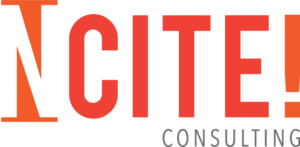I recently gave a presentation to a group of nonprofit leaders and asked them what part of their job was the most stressful. Fundraising rose to the top of the list.
I was reminded of how overwhelming fundraising can be for many nonprofit leaders. For the small but mighty nonprofits I often work with, fundraising can feel exceptionally overwhelming because of limited staff and resources. I hear frequently from leaders who can’t hire development staff. They are working from an excel spreadsheet of donor contacts. They are struggling with creating a sustainable giving program that builds lasting relationships with donors. These leaders all recognize fundraising as a catalyst for change within their organizations. However, they need help in determining the strategies that will be most effective at achieving their long-term goals. These are very real and valid challenges especially when resources are limited.
Fundraising goals and strategies may look different for every shop, however, there are several fundraising principles that lead to successful outcomes regardless of shop size and available resources. I want to share some of those tips with you today. I hope this helps to lighten your load and prepare you for a stellar year-end campaign!
Five Things You Can Start Today to Improve Your Fundraising Strategy
- Organize Your Data. Before you start connecting with donors, you need to spend some time organizing your donor data. Who are your top prospects? How much do you know about them? Who within your organization is responsible for connecting with them? Assign donors to a staff person or board member to ensure there is accountability and donors are receiving one-on-one connections. Take the necessary time to research and gather relevant information about your donors. Organizing data becomes extra challenging if you aren’t currently using a donor management software system. I encourage you to explore your options and plan to budget for this investment sooner rather than later. It will make your job so much easier in the long run!
- Time Management. I talk a lot about time management. It’s so important and plays a critical role in all aspects of your work, including fundraising. If fundraising is a priority, you must block out time every week to meet one-on-one with donors. I tell leaders that they need to make plans to connect with each donor at least 3 times a year. Use this as a guide and do some basic math to determine how many meetings you need each week to achieve this goal. Block out time and start connecting! As things happen in the week and you must adjust your calendar, do your best to not mess with this time. Meeting with donors is one of the most important things you can do to help your fundraising efforts and you must prioritize making it happen.
- Be Clear with Your Asks and Messaging. Donors are investing in the mission of your organization and need to feel confident in your longevity and impact. Before you make an ask, be sure you are clear about what you are asking. Be prepared to answer questions from a donor about your immediate needs, your finances, and your long-term goals and vision. At the heart of fundraising is relationship building. How you communicate with your donor demonstrates your respect and value for them as a person and the important part they play in achieving your mission. Be thoughtful, genuine, and authentic.
- Recognize Fundraising is a Team Sport. All nonprofit staff and board members play an essential part in fundraising. You are all storytellers helping to spread the message of your organization’s work and the impact it has on your community. Take steps to build a culture of fundraising within your shop. You can do this by hosting training opportunities, and talking about fundraising regularly at staff and board meetings. If you are an Executive Director, remember that fundraising is a significant part of your role even if you have development staff. Your engagement with fundraising is setting an example for your entire team.
- Engage Your Board. I hear from many nonprofit leaders that their boards don’t want to fundraise. Remove the intimidation factor for your board by teaching them that fundraising isn’t about just making the ask. Fundraising also includes writing a thank you note to donors or making a simple introduction to a friend or colleague they think might be interested in learning about your work. They can also invite a friend to an organizational event or invite them to tour your facility. These things are an essential part of fundraising and a low-pressure way for your board members to actively participate in your fundraising efforts.
Fundraising is a unique mix of art and science. The art involves building relationships, authentic connections, communication, and gratitude. The science includes research, data management, well-defined metrics, and proven strategies. Apply the tips above and you will be well on your way to creating a successful and sustainable fundraising program.


